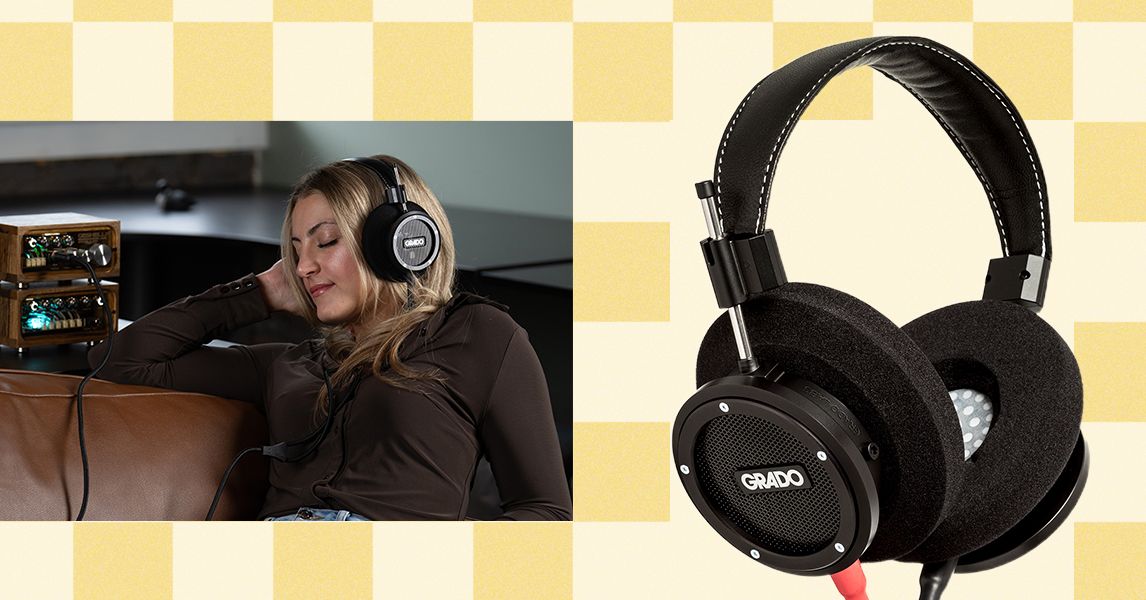Tech
Looking for Softer Sheets? These Bamboo Sheets Are the Answer

Comparing Our Favorite Bamboo Bedding
Terminology to Know When Shopping
Confused by the terms used to describe bamboo bedding? Here’s a quick breakdown.
Bamboo type: You’ll see bamboo rayon, viscose, or lyocell listed for the bamboo, which explains what method was used for turning the bamboo into fibers that could become sheets. Rayon is the cheapest, while viscose is a slightly better production process, and lyocell is the most ideal process (but still not a perfect one, and usually the most expensive).
Certifications: Some companies will label bamboo sheets as organic, using certifications like Oeko-Tex. You can learn more about organic certification terms here to understand what they each mean, and our thoughts on organic bamboo in our FAQs below. You might also see FSC-certified, which means it was sourced through sustainable forests certified by the Forest Stewardship Council.
Honorable Mentions
Cariloha Classic Bamboo Sheets for $239: Cariloha’s Classic Bamboo Sheets have a twill weave, which has a diagonal thread pattern and doesn’t sound as soft as a sateen weave that has a three-over-one pattern. But these sheets still felt super soft, and the softness difference compared to the pricier Retreat Sheets ($339) was minor for such a big price difference. There’s no corner straps, though.
Cariloha Retreat Bamboo Sheets for $339: These sheets are super soft and silky and use lyocell fabric to be more sustainable. They’re a similar softness to the brand’s cheaper sheets, but if you want to prioritize eco-friendly sheets, lyocell is a good option (though not a perfect carbon-neutral solution). I also really like the included straps, but you can find those on cheaper sets like the Luxome sheets I recommend above.
Ettitude Luxe Sheet Set for $470: These sheets are fantastically soft and use a combination of bamboo lyocell and bamboo “biochar” to make them antifungal and odor-resistant. They ran a little warm for my liking, but if you’re looking for something to keep odors and fungi away, these could be the splurge for you. Ettitude previously called these Airy+ instead of Luxe, but both use a combination of lyocell and biochar.
Honeydew Sheets for $230: These sheets felt a little stiff at first but softened up a bunch after washing. They also come with a securing strap, so they’re a good option for taller mattresses. The only downside is that they’re only available in two colors, but if you want white or a nice dark gray, you’re in luck.
My Sheets Rock the Regulator Sheet Set for $199: These sheets are super soft. They promise to regulate your temperature, but I found myself waking up a little too warm some nights. If you aren’t a hot sleeper, these are overall soft, comfortable sheets to sleep on.
Pom Pom at Home Bamboo Sateen Sheet Set for $368: These are good bamboo sheets, but for the price, we were more impressed by others we tested.
Quince Linen Bamboo Bundle for $255: This set would have been a pick if it were still available. It’s a fantastic combination of linen and bamboo that gets the best of both worlds: the softness and cool touch of bamboo with the structure and airflow of linen. It’s a great pick for hot sleepers—if it resurfaces, buy it!
Quince Bamboo Sheet Set for $130: Quince makes some solid sheets, and these bamboo ones are super soft. They’re a little heavy for me as a hot sleeper, but otherwise come in a nice range of colors and have an Oeko-Tex certification, meaning no harmful chemicals were used. Quince also says the bamboo is organic, but there aren’t any certifications to confirm that (more below on our thoughts on organic bamboo bedding).
Sunday Citizen Bamboo Sheet Set for $109: WIRED reviewer Louryn Strampe found these sheets to be super soft and fantastic to sleep on. But even with the claimed deep pockets, they tended to pop off her mattress, and other picks like Luxome’s sheets feature straps that will avoid that problem.
FAQs
What Types of Bamboo Are There?
There’s a few different terms you might see when describing the bamboo fibers that make up a set of bamboo sheets. Bamboo isn’t naturally a soft fiber, so it goes through a harsh chemical process to break it down and turn it into fibers that can be woven into sheets. Each different name lets you know what kind of process was used and what kind of chemicals (and chemical off-put) were involved.
Bamboo rayon and bamboo viscose are sometimes used interchangeably, though they shouldn’t be since they aren’t exactly the same. Rayon is likely a term you’ve seen before, since it’s a general term used for fabric made from regenerated cellulose. Bamboo rayon usually suggests that it’s semi-synthetic and might not be 100 percent bamboo. Meanwhile, bamboo viscose also uses bamboo cellulose as its base, though it has a slightly different process. Viscose is another type that isn’t limited to bamboo. Just about every sheet I’ve tested claims to be 100 percent bamboo viscose.
Bamboo lyocell is the best of the three, because lyocell has a closed-loop process, which means that almost all of the chemicals used to make more lyocell get reused rather than dumped. Lyocell is a fantastic-quality fabric that makes for a great cooling sheet, so it’s a term to look for if you want to stay cool while you sleep.
Are Bamboo Sheets Cooling?
While bamboo is absolutely cool to the touch when you first climb into bed, I often find that bamboo bed sheets can warm up quite a bit throughout the night. Some companies claim that the bamboo fibers can help regulate your temperature and wick away moisture. As a hot sleeper, I haven’t found this true with every set of bamboo sheets. Some have a weave that’s too heavy to keep me cool on hot nights, since no amount of promised moisture-wicking can replace good airflow to keep you cool. There are a few sets of bamboo bed sheets I recommend below that keep me cooler than others, but I recommend visiting our guide to the Best Cooling Sheets if you want to consider all kinds of bed sheets that could keep you cool, from bamboo to cotton percale and even sheets with phase-change material (or PCM) blended in.
Can Bamboo Sheets Be Organic?
Unlike cotton fabrics, which have the Global Organic Textiles Standard or GOTS, there’s no overarching certification to verify if bamboo is organically sourced. Many sheet makers will say the bamboo is organic, but with no main certification to confirm this, it’s hard to say without a doubt that any bamboo sheets are fully organic.
Instead, you’ll usually see Oeko-Tex certifications, which confirm that no harmful substances were used, and sometimes you’ll see Forest Stewardship Council or FSC certifications, which confirm the bamboo was sustainably sourced. Hopefully a primary bamboo organic certification will come out in the future to better inform bamboo textile shoppers. You can learn more about existing organic certifications in our guide here.
Does Thread Count Matter?
Bamboo sheets have a thread count, just like cotton sheets, describing how many threads are in a square inch of the fabric. You don’t want too high of a thread count—anything over 800 is purely marketing-speak, and higher thread counts can mean shorter, lower-quality fibers. It’s better to have fewer fibers that are longer and stronger.
Bamboo made into rayon, viscose, and lyocell can be manipulated into a long thread more easily than cotton, of course, so we haven’t seen the crazy-high thread counts listed on bamboo sheets. Many of these sheets are also a sateen weave, which is a three-over-one thread style, leading it to feel softer but not be as breathable. It’s not always so simple as sateen will make you hot, of course; our favorite cooling bamboo sheets from Ettitude have a sateen weave, so it depends on several factors.
The takeaway? Don’t worry about thread count. Focus on type of weave and reviews (like ours!) to get a better idea of whether a set of bamboo sheets (or any other kind of sheet) will suit your sleep needs.
How Does WIRED Test Bamboo Sheets?
For our bamboo sheets guide, I compared our picks both overnight and side by side for softness, cooling properties, and price. Each set of sheets was slept on anywhere between two and seven nights, depending on how it performed, and was washed multiple times to check for pilling or design flaws. I’m a hot sleeper living in Southern California, with my bedroom on the third floor of my home, so it’s been easy to discover if sheets can’t keep me cool all night long. I also looked at each sheet’s quality in reference to the price to see what sheet sets were really worth investing in after testing each one.
How Does WIRED Obtain Sheet Samples? What Happens to Samples After Testing?
All sheets in this guide were obtained as testing samples from companies. We obtain these sheets with no obligation to cover or promises for what coverage could look like. When testing is complete, the top picks are held onto for long-term testing, while the rest are donated locally.
Power up with unlimited access to WIRED. Get best-in-class reporting and exclusive subscriber content that’s too important to ignore. Subscribe Today.
Tech
OpenAI’s Child Exploitation Reports Increased Sharply This Year

OpenAI sent 80 times as many child exploitation incident reports to the National Center for Missing & Exploited Children during the first half of 2025 as it did during a similar time period in 2024, according to a recent update from the company. The NCMEC’s CyberTipline is a Congressionally authorized clearinghouse for reporting child sexual abuse material (CSAM) and other forms of child exploitation.
Companies are required by law to report apparent child exploitation to the CyberTipline. When a company sends a report, NCMEC reviews it and then forwards it to the appropriate law enforcement agency for investigation.
Statistics related to NCMEC reports can be nuanced. Increased reports can sometimes indicate changes in a platform’s automated moderation, or the criteria it uses to decide whether a report is necessary, rather than necessarily indicating an increase in nefarious activity.
Additionally, the same piece of content can be the subject of multiple reports, and a single report can be about multiple pieces of content. Some platforms, including OpenAI, disclose the number of both the reports and the total pieces of content they were about for a more complete picture.
OpenAI spokesperson Gaby Raila said in a statement that the company made investments toward the end of 2024 “to increase [its] capacity to review and action reports in order to keep pace with current and future user growth.” Raila also said that the time frame corresponds to “the introduction of more product surfaces that allowed image uploads and the growing popularity of our products, which contributed to the increase in reports.” In August, Nick Turley, vice president and head of ChatGPT, announced that the app had four times the amount of weekly active users than it did the year before.
During the first half of 2025, the number of CyberTipline reports OpenAI sent was roughly the same as the amount of content OpenAI sent the reports about—75,027 compared to 74,559. In the first half of 2024, it sent 947 CyberTipline reports about 3,252 pieces of content. Both the number of reports and pieces of content the reports saw a marked increase between the two time periods.
Content, in this context, could mean multiple things. OpenAI has said that it reports all instances of CSAM, including uploads and requests, to NCMEC. Besides its ChatGPT app, which allows users to upload files—including images—and can generate text and images in response, OpenAI also offers access to its models via API access. The most recent NCMEC count wouldn’t include any reports related to video-generation app Sora, as its September release was after the time frame covered by the update.
The spike in reports follows a similar pattern to what NCMEC has observed at the CyberTipline more broadly with the rise of generative AI. The center’s analysis of all CyberTipline data found that reports involving generative AI saw a 1,325 percent increase between 2023 and 2024. NCMEC has not yet released 2025 data, and while other large AI labs like Google publish statistics about the NCMEC reports they’ve made, they don’t specify what percentage of those reports are AI-related.
Tech
The Doomsday Glacier Is Getting Closer and Closer to Irreversible Collapse

Known as the “Doomsday Glacier,” the Thwaites Glacier in Antarctica is one of the most rapidly changing glaciers on Earth, and its future evolution is one of the biggest unknowns when it comes to predicting global sea level rise.
The eastern ice shelf of the Thwaites Glacier is supported at its northern end by a ridge of the ocean floor. However, over the past two decades, cracks in the upper reaches of the glacier have increased rapidly, weakening its structural stability. A new study by the International Thwaites Glacier Collaboration (ITGC) presents a detailed record of this gradual collapse process.
Researchers at the Centre for Earth Observation and Science at the University of Manitoba, Canada, analyzed observational data from 2002 to 2022 to track the formation and propagation of cracks in the ice shelf shear zone. They discovered that as the cracks grew, the connection between the ice shelf and the mid-ocean ridge weakened, accelerating the upstream flow of ice.
The Crack in the Ice Shelf Widens in Two Stages
The study reveals that the weakening of the ice shelf occurred in four distinct phases, with crack growth occurring in two stages. In the first phase, long cracks appeared along the ice flow, gradually extending eastward. Some exceeded 8 km in length and spanned the entire shelf. In the second phase, numerous short cross-flow cracks, less than 2 km long, emerged, doubling the total length of the fissures.
Analysis of satellite images showed that the total length of the cracks increased from about 165 km in 2002 to approximately 336 km in 2021. Meanwhile, the average length of each crack decreased from 3.2 km to 1.5 km, with a notable increase in small cracks. These changes reflect a significant shift in the stress state of the ice shelf, that is, in the interaction of forces within its structure.
Between 2002 and 2006, the ice shelf accelerated as it was pulled by nearby fast-moving currents, generating compressive stress on the anchorage point, which initially stabilized the shelf. After 2007, the shear zone between the shelf and the Western ice tongue collapsed. The stress concentrated around the anchorage point, leading to the formation of large cracks.
Since 2017, these cracks have completely penetrated the ice shelf, severing the connection to the anchorage. According to researchers, this has accelerated the upstream flow of ice and turned the anchorage into a destabilizing factor.
Feedback Loop Collapse
One of the most significant findings of the study is the existence of a feedback loop: Cracks accelerate the flow of ice, and in turn, this increased speed generates new cracks. This process was clearly recorded by the GPS devices that the team deployed on the ice shelf between 2020 and 2022.
During the winter of 2020, the upward propagation of structural changes in the shear zone was particularly evident. These changes advanced at a rate of approximately 55 kilometers per year within the ice shelf, demonstrating that structural collapse in the shear zone directly impacts upstream ice flow.
Tech
Grado’s Signature S750 Headphones Sound Modern but Feel Like the ’70s

The friction-pole mechanism for headband adjustment is no less agricultural, for all its familiarity where Grado headphone designs are concerned. And while the detachable cable is a fair bit more flexible than some older Grado models, that’s not the same as saying it’s meaningfully flexible. If there’s a more willfully unhelpful length of cable in all of headphone-land, I’ve yet to encounter it.
On the subject of the cable: Grado provides 180-ish centimeters of it with a 6.3-mm termination at the end. When you’re charging this sort of money for headphones, it’s not outlandish to imagine your customer might have a device that accepts a balanced connection. Frankly, why there isn’t a choice of cables in the packaging is, frankly, beyond me. It’s something that the overwhelming majority of Grado’s rivals provide as a matter of course, and though the company’s website suggests there are forthcoming cable options “including a variety of lengths, as well as balanced terminations such as 4-pin XLR and 4.4mm,” these have been “forthcoming” for quite some time now, and will have a cost attached.
Photograph: Simon Lucas
I’m in no position to doubt the effectiveness of the “B” ear cushions where sound quality is concerned. After all, the Signature S750 sound superb, and Grado suggests the cushion design is a contributing factor. What I do feel qualified to say, though, is that the raw-feeling foam of the ear cushions is not especially comfortable, and that it retains and returns the wearer’s body heat with something approaching glee. “Premium” and “luxurious” are not words that apply.
Ultimately, it depends on what your priorities are. There’s certainly no arguing with the way the Signature S750 sound. They’re uncomplicatedly impressive and periodically quite thrilling to listen to, depending on the mix. But unless you’re one of those hair-shirt hi-fi fundamentalists from back in the day, one of those listeners who somehow doesn’t believe outstanding sound quality is valid unless there’s some suffering attached, there may well be too many shortcomings to overlook when it comes to these Grados. “Hand-assembled in Brooklyn, USA” notwithstanding.
-

 Business1 week ago
Business1 week agoHitting The ‘High Notes’ In Ties: Nepal Set To Lift Ban On Indian Bills Above ₹100
-

 Business1 week ago
Business1 week agoStudying Abroad Is Costly, But Not Impossible: Experts On Smarter Financial Planning
-

 Business1 week ago
Business1 week agoKSE-100 index gains 876 points amid cut in policy rate | The Express Tribune
-

 Sports1 week ago
Sports1 week agoJets defensive lineman rips NFL officials after ejection vs Jaguars
-

 Fashion4 days ago
Fashion4 days agoIndonesia’s thrift surge fuels waste and textile industry woes
-

 Business4 days ago
Business4 days agoBP names new boss as current CEO leaves after less than two years
-

 Tech1 week ago
Tech1 week agoFor the First Time, AI Analyzes Language as Well as a Human Expert
-

 Entertainment1 week ago
Entertainment1 week agoPrince Harry, Meghan Markle’s 2025 Christmas card: A shift in strategy


















